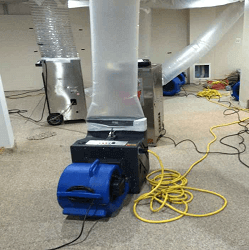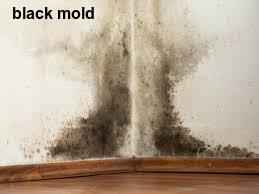Quality, Services : Water Damage Insurance South Houston Texas
We offer Water Damage Insurance services in South Houston Texas, call us today!
Your Full-Service, 24 Hour Water Damage Insurance in South Houston Texas
✅Call .When contacting any Water Damage South Houston Texas Insurance contractor, the majority of the time, that's all they can deal with is water damages. That suggests they will come in and also do your water damage restoration and extraction leaving you to pick up the items. At 24/7 Catstorng LLC, we do so much more than that. We are your full-service water mitigation business helping you from the point you call us up until your home or office is back to its original problem.

What Goes Into South Houston Water Restoration?
When a house is damaged because of fire or smoke a restoration business might use the adhering to services to their customers; storage space of family goods, cleansing, maintenance of the residences stock both endangered and also non-restorable, removal of components, deodorization, reconstruction, emergency protecting of the scene, packaging, furniture refinishing as well as reupholstering and also repair service of appliances as well as electronics.What does a flood restoration company do?
Flooding restoration solution can efficiently as well as properly fix the carnage triggered by flooding and supply you with water damage reconstruction that will certainly leave house, furnishings, and also possessions clean, completely dry, and ready for business, casual living.Previously South Houston Texas flooded streets were lined with water-damaged furnishings as well as roadways full of lorries as citizens went hunting for cleansing supplies, insurance policy quotes and repair help.
Having a specialist Water Damage rug cleansing conserves you a big migraine when a water damaged carpet is entailed as well as bring your carpeting to life with carpeting fixing as well as fail to remember the headache of cleaning it on your own and require a thorough and expert rug cleansing.
What is water damage repair? - Insurance South Houston Texas
Trigger repair work of broken or scrubby roofing products by an expert professional roofer will assist avoid interior water damages and mold damages in South Houston. Catstrong water damage reconstruction, drying out, deodorization, purification, disinfection, water damages repair, reconstruction and also restoration of property and business properties damaged by fire, water and also various other calamities by a network of trained experts, professionals as well as remediation. Rug repair service experts have access to devices and techniques that will completely clean your water damaged rug and do away with mildew that may have resulted.-
water damage home
-
water damage inspection
-
water damage near me
-
water damage restoration
-
water damage types
-
water damage restoration services
-
water damage iicrc standard
-
water damage restoration tips
-
water damage damage water
-
water damage insurance cover water
-
water damage repair
-
water damage articles
-
water damage restoration water removal
-
water damage homeowners insurance cover
-
water damage insurance
-
water damage cover
-
water damage house
-
water damage extraction
-
water damage removal
South Houston Texas Water Damage Chruches South Houston Texas 77001
Exactly how are water damage contents cleaned?
Carpeting repair professionals in South Houston are certified in a range of areas when it pertains to carpet cleaning, one of them being the handling and cleansing of water damaged rugs. Neglect doing the carpet repair service yourself and also get a Water Damage specialist rug cleaning in when it comes to a water harmed rug South Houston. We provide a variety of solutions like: mold removal, water and fire damages repair work, rug cleansing, basic construction and many various other water damage services in South Houston.Regardless of where the destruction originates from, be it natural flooding, burst pipelines, or substantial rainfall storms without appropriate drain, water damage remediation professionals have the therapy, experience, as well as tools programs that remove wetness in the house and substantially lower the chance of mildew in wall surfaces, floors, and air ducts. A water harmed carpet needs specialist rug repair to bring it back to its previous state of being a clean carpet. A repair professional can regulate mold and fix the water damages.
What to look for in a water damage Water Damage company?
Is a reputed water damages repair business offering efficient services for water damages repair service in several parts of South Houston, Texas. If you are living within South Houston, Texas flood-zone location, far better make a very early booking with Catstrong; you can inquire about water damage repair in South Houston, water damages elimination, tornado damage repair service, and flooding damage repair work in South Houston. Our professionals at Catstrong LLC South HoustonTexasprovide home owners with comfort via our specialist Water Damage flooding damage cleanup services that assists you to tidy up your home that has sustained flood damages.The following sources give more info about water damage and also its results.
- Fungal Species and Water-Damaged Building Materials: This write-up discusses just how water damages urges fungis growth on building materials.
- Response to Water Damage: The Environmental Protection Agency provides a graph to lead property owners as well as business owners in reacting to water damage.
- Mold: A Health Hazard: This article from the Federal Emergency Management Agency describes the threats of mold, which can develop when developing materials are revealed to water.
- Water-Damaged Wood Furniture PDF: This source supplies numerous ideas for salvaging water-damaged wood furnishings.
- Floods and Water Damage: The American Lung Association describes the carcinogen of water damage.
Cleaning Up After a Flood: The University of Minnesota Extension clarifies the safety equipment needed and treatments utilized to clean up the water damages from a flooding. - Restoration Guidelines and Criteria PDF: This paper consists of details regarding the remediation of residences and also organisations damaged by water.
- Cleaning Flood-Damaged Carpets and Rugs: This write-up gives useful suggestions for those that wish to conserve their water-damaged carpetings as well as rugs.
- Guidelines on Indoor Fungi Removal PDF: This document explains health effects of fungi indoors and discusses proper remediation procedures.
- Types of Water Damage: This write-up discusses the different kinds of water damage that can take place in domestic and business residential properties.
- Saving Paper Items: This resource discusses just how to maintain paper things harmed by water.
- Tips for Safe Flood Cleanup: This resource offers security pointers for people that need to clean up after substantial water damages.
Initial Document - Go Through The Report Below
Hopefully you liked our part on WATER DAMAGE. Thanks so much for spending some time to read our piece. Do you know anybody else who is enthusiastic about the subject? Take a moment to promote it. I am grateful for being here. Revisit us soon.Encircle Releases Game-Changing Moisture Tool
Encircle has launched a new Moisture tool within the Encircle platform to help restoration contractors efficiently document water damage and determine the best course of action to dry the job. Keeping with Encircle’s easy-to-use design, the new moisture tool has an intuitive user-interface that guides technicians as they enter information.
Developed with the help of certified restorers and water loss specialists, Encircle’s Moisture tool facilitates the user through a drying plan, giving restorers a way to visually document the claim.
This visual representation illustrates the mitigation strategy through a moisture map or sketch, helping stakeholders understand what is required to dry the structure. It also includes dehumidifier and air mover calculators that follow the S500 IICRC Standard, helping technicians determine how much equipment is needed on the job.
Even better, the tool features new reports to help insurers and policyholders understand the extent of the loss. Reports are available to all stakeholders on the Encircle Platform as soon as they are created.
“Our Moisture tool bridges the communication gap between insurers and restorers allowing both to make accurate and timely decisions,” noted Paul Donald, CEO of Encircle. “Simplifying the process of documenting a water loss is a game changer for the property claims industry.”
Even techs with little to no background in water mitigation can use the Encircle Moisture tool, allowing experienced technicians and PMs to remotely review their work to ensure that readings and equipment are properly placed. It also features helpful alerts that notify restorers when the dehumidifier is not working, allowing them to proactively mitigate issues.
“Encircle once again outpaces their competition in user experience with their new Moisture tool. Finally, a company in the restoration industry that knows how to create the complete field tech user experience & interface with professional reports. It just keeps getting better,” added Jay Holland, Field Consultant at Restoration 1 Holdings Company.
The new Moisture tool is a key component of the Encircle platform, available now to all Encircle customers.
About Encircle
Connecting the claims process from first notice of loss to claim closed, Encircle helps insurance companies, TPAs, and restoration contractors work collaboratively on one easy-to-use platform. Insurers, TPAs, restorers, and policyholders alike can instantly share pictures, videos, reports, sketches, and more, thereby improving communication and customer satisfaction. Discover how Encircle makes managing claims easy at getencircle.com.
| Mold Inspection South Houston | Mold Testing South Houston | Mold Remediation South Houston |
| Mold Removal South Houston | Water Damage South Houston | Things to do in South Houston |
Industry organizations:
Water Damage South Houston Texas
South Houston Texas Water Removal Services
South Houston Texas Restoration Company South Houston Texas Mold Removal
South Houston Texas Mold Remediation Cost South Houston Texas Mold Removal
South Houston Texas Mold Remediation South Houston Texas Mold Removal South Houston Texas EPA Health Issues South Houston Texas OSHA South Houston Texas Water Damage Catstorng of South Houston Texas Restoration South Houston Texas
Catstrong of -95.23549 - South Houston
Why Choose Us?
- Very Experience
- Open 24 Hours Every day
- Fast Arrival Time
- Competitive Pricing
- Accepting Credit Cards
- Quick and Honest Service
- Excellent Customer Service
- Commitment and Promise
- Embrace New Technology
| Mold Inspection | Mold Remediation |

Services Offered in South Houston Texas | Insurance
RSP Water Damage Restoration of Austin
2630 Exposition Blvd Suite 229 Austin, TX 78703
(512) 588-2821
https://austin.reconstructionservicepros.com/

